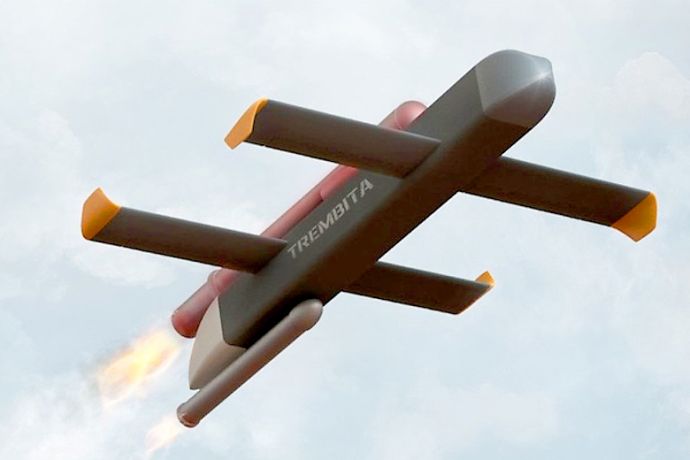In Ukraine, engineers and volunteers are developing an indigenous combat missile named “Trembita,” intended to serve both as an effective weapon and a decoy against Russian air defense systems, The Gaze wrote.
This information is reported by the French television channel France 24.
The development of the missile is being carried out by volunteer engineers from the design bureau PARS, in collaboration with the civic organization “Vidsich.” This initiative aims to create a highly cost-effective solution that can overload adversary air defense systems by deploying numerous deceptive missiles. The primary concept behind “Trembita” is to increase the chances of successfully hitting targets by diverting the enemy’s attention and resources.
Sergey Biryukov, an engineer from the PARS bureau, explained, “As a strike missile, it will carry a warhead and utilize sophisticated electronics for accurate targeting.” He further highlighted that the missile, when used as a decoy, offers a budget-friendly approach that discourages the adversary’s interception attempts from an economic standpoint while also draining their air defense capabilities.
The missile’s engine is designed without any movable parts, making it simple to manufacture and operable using petrol. The notable aspect of this attention-grabbing missile is to ensure that it is easily detectable on Russian air defense radar systems, compelling them to respond.
Sergey emphasized, “It’s hugely advantageous for us to ‘exchange’ a cost-effective missile for Russia’s expensive air defense shots. A swarm of thirty ‘Trembitas’ will penetrate their anti-aircraft barrier and deliver thermobaric surprises.”
According to the indicated specifications, the missile will weigh 100 kg and can carry a thermobaric or combined fragmentation-high explosive payload of up to 20 kg. Capable of flying at a maximum speed of over 400 km/h, it can cover approximately 140 km. Moreover, the missile’s flight altitude can range from 30 to 2000 meters, offering versatility in various combat scenarios. The launch will be facilitated through a pneumatic catapult or solid-fuel booster.
Additionally, the engineers showcased another project: a self-guided system for 120mm mortars named “Chumak.” This innovative technology automatically adjusts the aim based on calculations, allowing precise targeting without human intervention.
The inventors highlight that this technology enables rapid deployment, fire engagement, and withdrawal, thereby allowing military personnel to evade retaliatory fire.













